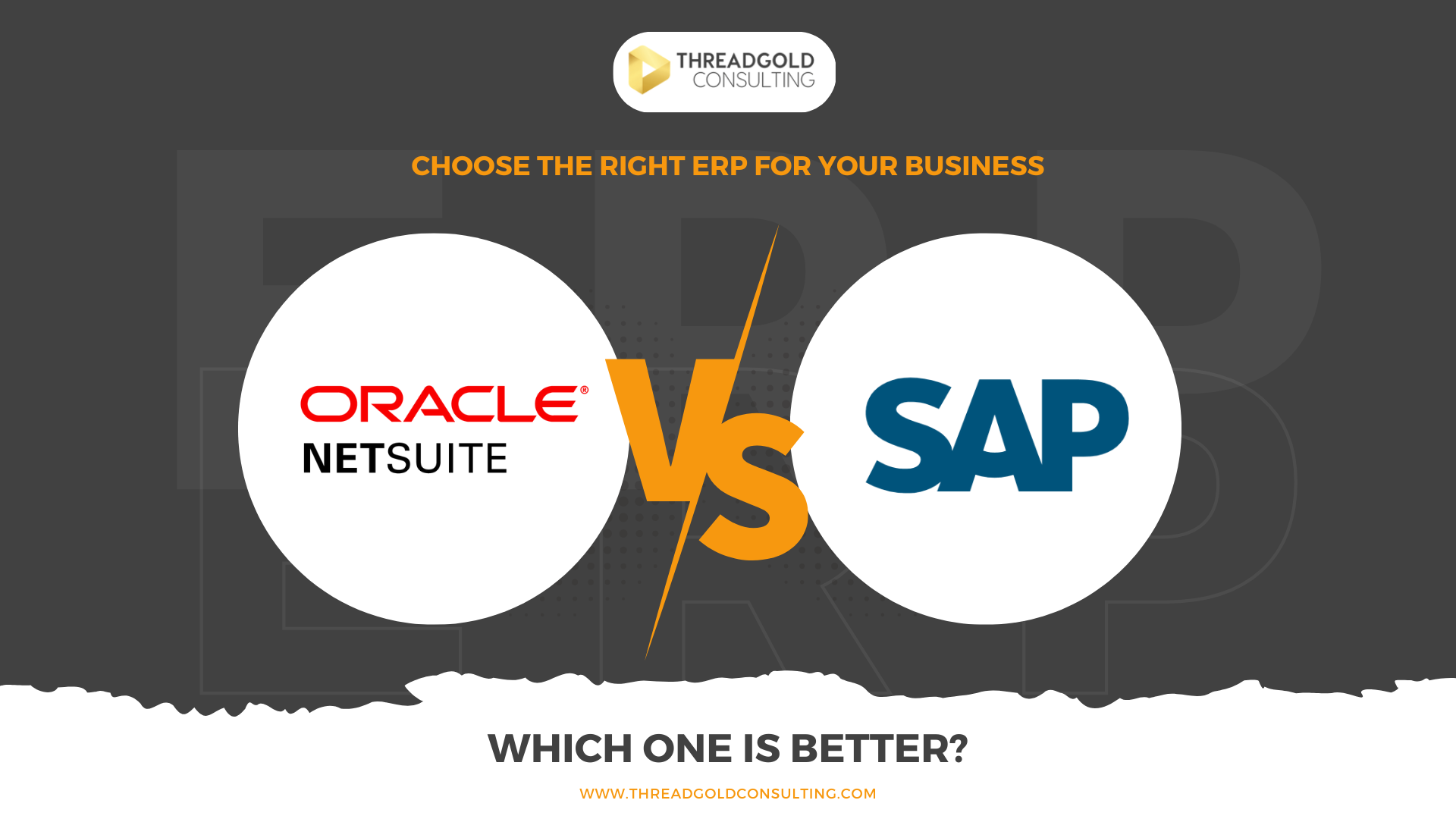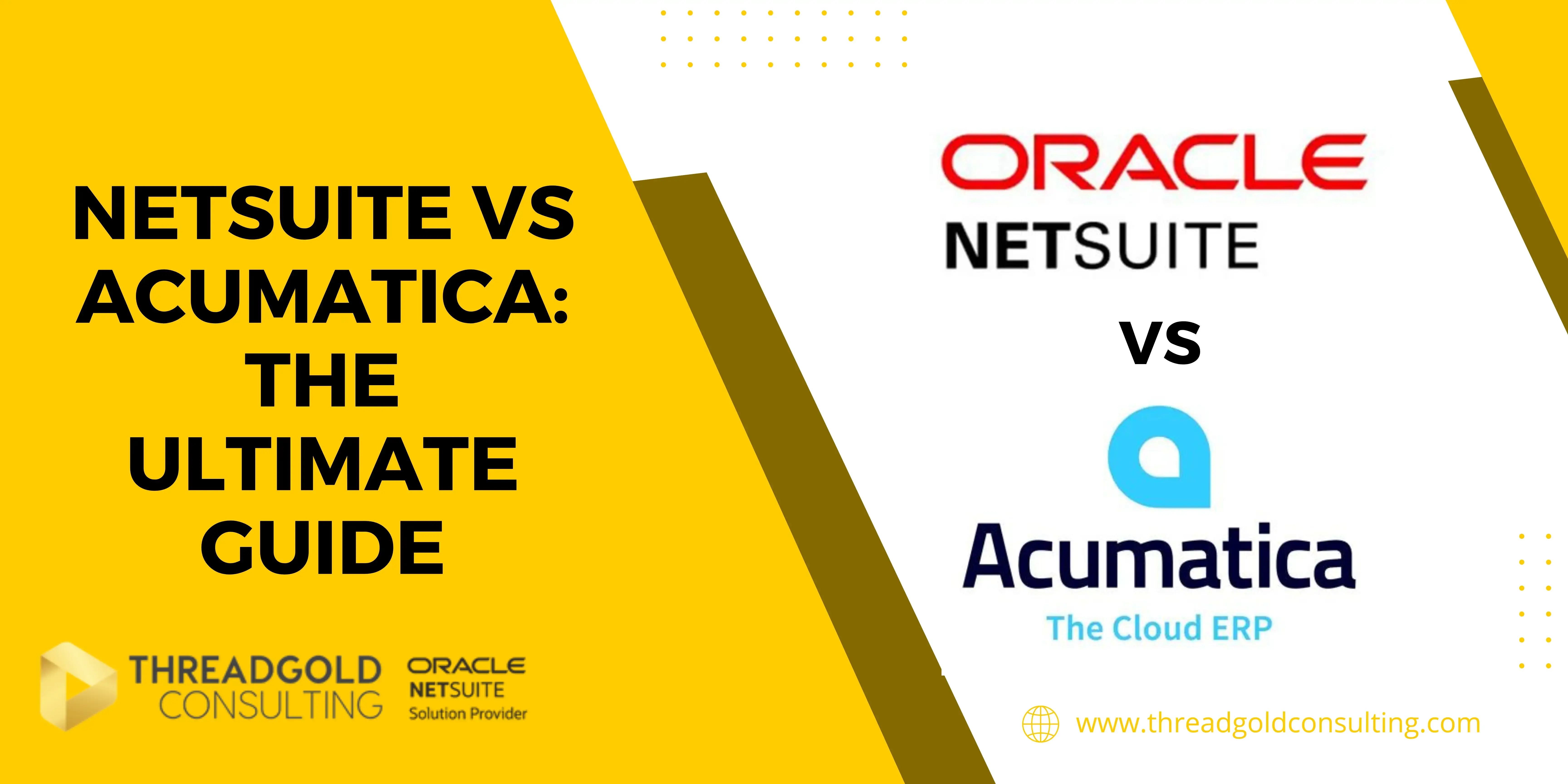Determining the best ERP solution for your business can be challenging and time-consuming. To take some of the guesswork out of the process, we have prepared this guide for you comparing Oracle NetSuite with Sage Intacct.
What are NetSuite and Intacct?
NetSuite is widely recognized as the #1 cloud-based ERP in the world. Originally developed in 1998 by Evan Goldberg as a cloud-based accounting solution, it quickly evolved into a comprehensive ERP platform. Today, NetSuite combines financial management with customer relationship management (CRM), professional services automation (PSA), manufacturing, and e-commerce functionality to provide businesses with a unified suite of tools to streamline operations.
In 2016, Oracle acquired NetSuite for $9.3 billion, further expanding its capabilities and global reach. Today, NetSuite serves over 32,000 customers in 200+ countries, solidifying its position as a leading ERP solution for businesses of all sizes.
Sage, a long-established player in the accounting software industry, acquired Sage Intacct in 2017. Intacct is a cloud-based financial management solution designed to help businesses manage their core accounting functions efficiently. Unlike NetSuite, which offers a full suite of business management tools, Sage Intacct focuses primarily on financials and accounting. It serves around 15,000 customers, primarily in North America, with a growing presence in other markets.
Industries Served
Both NetSuite and Sage Intacct cater to small and mid-sized businesses, as well as some larger enterprises.
NetSuite serves a wide range of industries, including:
- Software
- Manufacturing
- Professional Services
- Financial Services
- Retail and E-commerce
- Nonprofits
- Restaurants and Hospitality
- Advertising, Media, and Publishing
- Wholesale Distribution
Sage Intacct primarily focuses on industries with complex financial management needs, such as:
- Financial Services
- Construction and Real Estate
- Healthcare
- Hospitality
- Nonprofits
- Professional Services
- Software
- Wholesale Distribution
While both solutions support financial management, NetSuite's ERP suite extends beyond accounting, offering built-in CRM, e-commerce, and supply chain management, whereas Sage Intacct remains dedicated to core financial functions.
Similarities and Differences Between NetSuite and Intacct
The most significant difference between the two options is that Sage Intacct is an accounting package only. It doesn't offer any native functionality for manufacturing e-commerce, HR etc, however it integrates with many popular third-party programs to fill those gaps.
On the other hand NetSuite is a full-fledged ERP solution combining dozens of features to manage every part of your business.
Some of the features of NetSuite include:
Financial Management
- Accounts Payable
- Accounts Receivable
- General Ledger
- Multi-Currency
- Fixed Assets
- Multi-Company & Consolidation
- Revenue Recognition
- Subscription Billing
- Forecasting & Budgeting
- Financial Planning & Analysis
- Compliance Management
- Global Accounting and Consolidation
- Global Tax Management
- Governance, Risk, and Compliance
Customer Relationship Management
- Sales Force Automation
- Customer Service
- Marketing Automation
- Sales Reporting and Analysis
Supply Chain Management
- Order Management
- Production Management
- Inventory Management
- Procurement
- Warehouse & Fulfillment
- Demand Planning
- Shop Floor Control
- BOM Maintenance
- Global Supply Chain Planning and Execution
- Warehouse Management System
Production Management
- Product Data Management
- Work Orders and Assemblies Management
- Planning and Scheduling
- Quality Assurance
- Manufacturing Execution System (barcoding, HMI)
- WIP & Routing
Human Capital Management
- Human Resources Management
- Employee Onboarding
- Vacation Scheduling
- Employee Directories
- Payroll
Retail & E-commerce
- Point of Sale
- Mobile Point of Sale
- E-commerce
- Order & Inventory Management
- Product Content Management
- Marketing Automation
Professional Services Automation
- Timesheet Management
- Billing
- Project Management
- Resource Management
- Project Accounting
Omnichannel Commerce
- Real-time Omnichannel Tracking
- Native B2B Functionality
- Embedded Promotions Tool
- Content Management Tools
Professional Services
- Project Management
- Resource Management
- Timesheet Management
- Expense Management
Sage Intacct's features include:
- Accounts Payable
- Accounts Receivable
- Cash Management
- Intelligent General Ledger
- Order Management
- Purchasing
- Fixed Assets
- Inventory Management
- Project Accounting
- Billing
- Sales and Use Tax
- Spend Management
- Time and Expense Management
- Vendor Payment Service
Both software packages support multi-entity and global transactions, NetSuite offering this in a module called OneWorld. Additionally, these programs are much more powerful than something like QuickBooks. They offer strategic insights, helpful dashboards, and exceptional reporting capabilities.
An important thing to note is that Intacct uses batch processing, slowing down reporting and analytics. NetSuite's architecture supports real-time reporting, so it provides up-to-the-minute insights. Additionally, Intacct only supports English as a language, so someone may need to translate documents if you run a global company.
The accounting features of both programs are well-matched and meet the needs of most organizations.
CRM Capabilities
Unfortunately, Sage Intacct does not include a CRM package to work with the financials, but it does integrate with Salesforce.
NetSuite also offers seamless integration with Salesforce, but it also includes its own powerful CRM features for companies who want a choice. Using the built-in option allows you to instantly see all transactions associated with a customer, including billing and inventory figures.
Human Capital Features
Both software packages offer human capital features. NetSuite has core functionality that includes employee recognition and compensation, performance, attendance, leave management, and a full-featured payroll system.
Intacct offers some core human capital features through its third-party application Sage People. If you need changes to this software, it may be difficult and expensive to customize.
Business Intelligence
Where both companies shine is in the business intelligence and analytics arena. They have built-in dashboards and self-service reporting tools. However, NetSuite offers 200 included reports, whereas Intacct only provides 69.
Intacct does provide an add-on report writer for customized reports, but you must pay extra for it, and it can be complex to use and limited.
NetSuite allows customers to create dashboards and customized reports on the fly with no coding necessary.
Professional Services Automation
Intacct and NetSuite offer features for service industry businesses. When comparing both products head-to-head, NetSuite has more robust professional services automation (PSA) features like billing, project management, collaboration and status updates, resource management, project accounting connecting projects directly to the accounting system, timesheet management, and expense management.
Intacct offers some of these features, but they are limited and not fully integrated to be of much use.
Licensing & Pricing
Both NetSuite and Sage Intacct are licensed and subscribed to on an annual basis however the license price does not include extras like implementation fees, customizations, integrations, or data migration services.
You can license both NetSuite and Intacct directly through the company or through a reseller/partner like Threadgold Consulting.
Because NetSuite includes a lot of extra functionality, the price point is higher than with Intacct at around a minimum of $12,000 (approx. £9500) per year. Intacct only offers accounting and finance functions so is lower at a price point of around £6,750. However, due to NetSuite's modular nature you can easily select which aspects to use and/or add functionality at a later date, which can reduce the initial price.
If you are highly price sensitive and only require financial management for a single entity, Intacct is likely the best choice for you. However if you have multiple legal entities and/or require other functionality such as CRM, Ecommerce, Inventory Management, etc. NetSuite will likely be your preferred choice.
Looking to learn more about NetSuite pricing? Check out our comprehensive NetSuite pricing guide.
Deployment Options
Both software packages are cloud-based, meaning you can access them from anywhere using your internet browser without having to install any software on your machine or server. It works great for remote teams that are positioned around the globe. The cloud-based solutions are secure, private, and reliable, and updates to the software are made automatically, so you are always using the latest version.
Both systems offer multi-tenant software-as-a-service (SaaS) deployment models. Neither applications offer on-premise deployment options. If you are looking for an on-premise ERP you should not consider NetSuite or Intacct.
Partner Ecosystem
Sage Intacct has a comprehensive ecosystem of accounting software partners, known as ISVs (Independent Software Vendors). Sage Intacct's ISV partners range from large enterprise resource planning (ERP) providers to small, niche accounting software providers. This ecosystem provides Sage Intacct customers with a wide range of options for integrating their Sage Intacct account with other business applications. Sage Intacct's ISV partners are carefully vetted to ensure that they meet Sage Intacct's high standards for quality and compatibility. As a result, Sage Intacct customers can be confident that they are getting the best possible solution for their business needs.
SuiteCloud is NetSuite's comprehensive partner ecosystem of independent software vendors (ISVs) and service providers. These SuiteCloud Partners offer a range of valuable business applications and services that are designed to work seamlessly with NetSuite, enabling organizations to extend the power of their NetSuite solutions. SuiteCloud Partners play a critical role in the success of NetSuite customers, providing them with the ability to tailor their NetSuite solutions to meet their specific business needs. With SuiteCloud, organizations can have confidence that they are working with best-of-breed providers who are committed to delivering high-quality implementation solutions that are backed by NetSuite.
Customization
From setting up automated tasks to customizing the user interface, Sage Intacct provides users with the ability to tailor the software to their specific needs. While Sage Intacct does offer many pre-built customization options, there may be times when you need to create a custom solution. In these cases, Sage Intacct's robust APIs and programming language make it easy to create customizations that meet your unique business requirements. Whether you're looking to automate a task or build a completely new feature, Sage Intacct's customization capabilities give you the power to create the perfect solution for your business.
With NetSuite Customizations, you can add new fields, modify existing fields, create custom forms and workflows, and much more. NetSuite Customizations are easy to implement and require no coding. You can use NetSuite Customizations to improve data entry accuracy, streamline business processes, and save time. NetSuite Customizations are an essential part of NetSuite and can help you get the most out of NetSuite.
Which Solution is Right for You?
The big question you need to ask yourself is, what do you need your software to do? If you are looking for a complete, unified cloud-based ERP, then NetSuite is the option to choose. If you only need cloud-based accounting software, then Intacct may work for you. If your company grows, however, you may need something more robust later, but you can patch together a system using Intacct and third-party add-ons or switch to a unified system like NetSuite.
Out of the box, NetSuite offers solutions for ERP, CRM, financials, human capital management (HCM), professional services automation (PSA), and supply chain and manufacturing support. Additionally, the program has built-in multi-language, multi-currency, and multi-subsidiary support for international tax and regulatory compliance capabilities, making it perfect for multinational companies.
In the end, the decision of which system to use depends on the specific needs of the business. Oracle NetSuite and Sage Intacct are both very capable ERP systems, and they offer similar features and functionality. However, there are some key differences between the two systems that business owners should be aware of before making a decision. It is important to consider these differences carefully and make a decision based on what will best meet the needs of the business.

-2.png)




